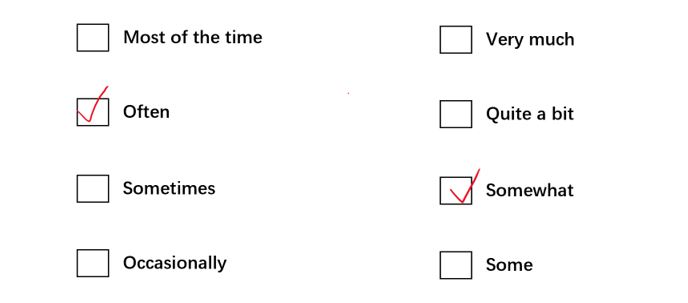The role of response domain and scale label in the quantitative interpretation of patient-reported outcome measure response options
A recent article on response options used in Patient Reported Outcome Measures by Dr Tessa Peasgood from Health Economics Unit, Centre for Health Policy and colleagues at Sheffield University in the UK has been published in Quality of Life Research.
When terms such as ‘often’, ‘quite a bit’ or ‘moderate’ are used in questionnaires do we really know how respondents interpret those words?
This paper reports on a study in which members of the UK public were asked to give a numerical interpretation of terms like these when used in questions about happiness, loneliness, and ability to do activities. The study found that response options were consistently assigned a lower value when they were used in questions about loneliness than in questions about happiness and activities. Respondent’s age and whether they spoke English as a second language also explained some of the variation in interpretation. The study concluded that members of the public quantify common response options in a similar way, but their quantification is not equivalent across domains or every type of respondent. recommends preferred scale labels. Recommendations for preferred response labels are provided.

